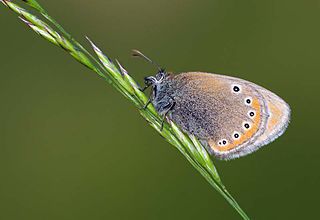
Bosnia and Herzegovina, abbreviated BiH or B&H, sometimes called Bosnia–Herzegovina and often known informally as Bosnia, is a country in Southeastern Europe, located in the Balkans. Bosnia and Herzegovina borders Serbia to the east, Montenegro to the southeast, and Croatia to the north and southwest. In the south it has a narrow coast on the Adriatic Sea within the Mediterranean, which is about 20 kilometres long and surrounds the town of Neum. Bosnia, which is the inland region of the country, has a moderate continental climate with hot summers and cold, snowy winters. In the central and eastern regions of the country, the geography is mountainous, in the northwest it is moderately hilly, and in the northeast it is predominantly flat. Herzegovina, which is the smaller, southern region of the country, has a Mediterranean climate and is mostly mountainous. Sarajevo is the capital and the largest city of the country followed by Banja Luka, Tuzla and Zenica.

The Herzegovina uprising was an uprising led by the Christian Serb population against the Ottoman Empire, firstly and predominantly in Herzegovina, from where it spread into Bosnia and Raška. It broke out in the summer of 1875, and lasted in some regions up to the beginning of 1878. It was followed by the Bulgarian Uprising of 1876, and coincided with Serbian-Turkish wars (1876–1878), all of those events being part of the Great Eastern Crisis (1875–1878).

The small heath is a butterfly species belonging to the family Nymphalidae, classified within the subfamily Satyrinae. It is the smallest butterfly in this subfamily. The small heath is diurnal and flies with a noticeable fluttering flight pattern near the ground. It rests with closed wings when not in flight. It is widespread in colonies throughout the grasslands of Eurasia and north-western Africa, preferring drier habitats than other Coenonympha, such as salt marshes, alpine meadows, wetlands, and grasslands near water. However, habitat loss caused by human activities has led to a decline in populations in some locations.

Coenonympha is a butterfly genus belonging to the Coenonymphina, a subtribe of the browns (Satyrinae). The latter are a subfamily of the brush-footed butterflies (Nymphalidae). As a rule, Palearctic species are colloquially called heaths, while Nearctic ones are called ringlets. Neither term is limited to members of this genus, however.

Coenonympha tullia, the large heath or common ringlet, is a butterfly in the family Nymphalidae. It flies in a variety of grassy habitats, including roadsides, woodland edges and clearings, prairies, bogs, and arctic and alpine taiga and tundra. It is a poor flyer, but can sometimes be found along ditches seeking new grounds. It is a holarctic species found in northern Europe, east across the Palearctic and across North America. The species was first described by Otto Friedrich Müller in 1764.

William Forsell Kirby was an English entomologist and folklorist.

The Satyrini is one of the tribes of the subfamily Satyrinae. It includes about 2200 species and is therefore the largest tribe in the subfamily which comprises 2500 species.

Dysauxes is a genus of moths in the family Erebidae. The genus was erected by Jacob Hübner in 1819.

Erebia euryale, the large ringlet, is a species of butterfly belonging to the family Nymphalidae.

Coenonympha glycerion, the chestnut heath, is a butterfly species belonging to the family Nymphalidae. It can be found in Eastern Europe and east across the Palearctic to Siberia and the Caucasus to North Korea.

Erebia cassioides, the common brassy ringlet, is a member of the subfamily Satyrinae of family Nymphalidae.

Catoptria domaviellus is a species of moth in the family Crambidae described by Hans Rebel in 1904. It is found in Bosnia and Herzegovina, Serbia and Montenegro, the Republic of Macedonia and Bulgaria.

Dyspessa is a genus of moths belonging to the family Cossidae. It was described by Jacob Hübner in 1820.

The Split Agreement or Split Declaration was a mutual defence agreement between Croatia, the Republic of Bosnia and Herzegovina and the Federation of Bosnia and Herzegovina, signed in Split, Croatia on 22 July 1995. It called on the Croatian Army (HV) to intervene militarily in Bosnia and Herzegovina, primarily in relieving the siege of Bihać.

Coenonympha leander, the Russian heath, is a butterfly belonging to the family Nymphalidae. It is found in northern Greece, Hungary, Bulgaria, southern Russia, Asia Minor, Armenia and Iran. The habitat consists of warm grassy areas.

Euphydryas orientalis is a small butterfly found in the Palearctic that belongs to the browns family.















